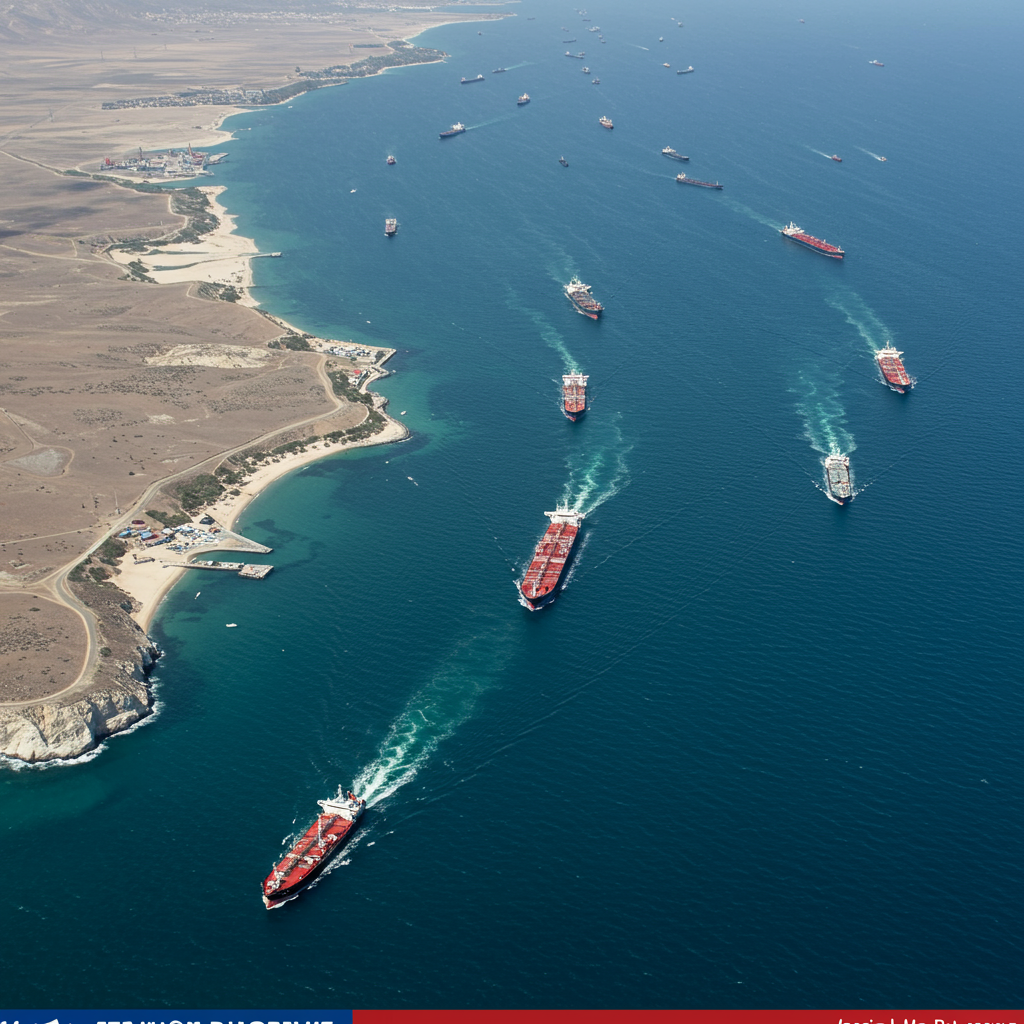Amid escalating tensions in the Middle East, particularly following unprecedented military strikes against Iranian nuclear sites in June 2025, focus has sharpened on the strategic Strait of Hormuz. Analysts point to the potential for Iran to retaliate by disrupting traffic through this vital global waterway, a move with profound implications for energy markets and international commerce. While Iran’s parliament reportedly voiced support for closing the strait, the ultimate decision rests with the country’s top leadership.
Iran has threatened such action in the past during periods of heightened confrontation, but has never followed through. However, the current geopolitical climate has renewed concerns, prompting closer examination of what the Strait of Hormuz is, why its free passage is critical, and how Iran might attempt to close it – and the potential fallout.
What is the Strait of Hormuz?
The Strait of Hormuz is a narrow sea passage connecting the Persian Gulf in the north with the Gulf of Oman and the Arabian Sea to the south. It lies between Iran on the north coast and Oman and the United Arab Emirates on the south coast. Considered one of the world’s most important oil chokepoints, its geography makes it inherently vulnerable to disruption.
At its narrowest point, the strait is only about 33 kilometers (21 miles) wide. Within this narrow passage, shipping traffic is funneled into two distinct lanes, each just 3 kilometers wide – one for inbound and one for outbound vessels. Despite its constraint, the strait is deep enough to accommodate the largest crude oil supertankers. Iran controls the northern territorial waters, while Oman and the UAE manage the southern side.
Why is the Strait So Important for Global Trade?
The Strait of Hormuz is indispensable for global energy security and trade. It serves as the primary maritime export route for most of the major oil and gas producers bordering the Persian Gulf, including Saudi Arabia, Iran, the United Arab Emirates, Kuwait, Iraq, and Qatar.
The volume of energy flowing through the strait is staggering. Approximately one-fifth of the world’s total oil consumption, or over a quarter of the world’s maritime oil trade, transits the strait daily. Data from early 2024 consistently shows around 20 million barrels of crude oil, condensate, and petroleum fuels passing through this passage every day, representing an estimated $600 billion worth of energy trade annually.
Beyond oil, the strait is also crucial for the global liquefied natural gas (LNG) market, facilitating about one-fifth of the world’s LNG trade, with significant exports originating from Qatar.
The economic reliance on the Strait of Hormuz extends across the globe, but particularly to Asia. In recent years, roughly 82% of the crude oil and condensates leaving the Gulf via the strait have been destined for Asian markets. Countries like China, India, Japan, and South Korea are heavily dependent on this route for their energy imports. China, for instance, is estimated to buy nearly 90% of Iran’s sanctioned oil exports, making it particularly vulnerable to any disruption.
Given its immense strategic importance, the US Fifth Fleet, based in Bahrain, is tasked with protecting commercial shipping and ensuring freedom of navigation in the region.
How Could Iran Attempt to Close the Strait?
While a complete, physical blockade might be complex, Iran could attempt to make passage through the strait too dangerous for commercial shipping, effectively achieving a de facto closure as shipping companies and insurers cease operations in the area.
Potential methods Iran could employ include:
- Sea Mining: This is considered a primary threat. Iran is believed to possess several thousand sea mines, including advanced types that can launch rockets from the seabed or lie moored underwater. Placing mines in the narrow 3km shipping lanes would pose a significant hazard. This operation would likely require rapid deployment using Iran’s submarine fleet, including Russian-made Kilo-class and smaller Ghadir-class midget submarines.
- Anti-Ship Attacks: Iran could launch attacks on commercial vessels or foreign warships using its various naval assets. This includes fast attack boats, missile-armed surface vessels, anti-ship ballistic missiles (similar to those used by allies in the Red Sea), air and sea drones, and semi-submersible craft. The Islamic Revolutionary Guard Corps (IRGC) navy is particularly active in this area.
- Coastal Batteries: Shore-based anti-ship missile batteries could target passing vessels.
- Limited Bypass Capacity: While Saudi Arabia and the UAE have invested in pipelines bypassing the strait (like Saudi Arabia’s East-West pipeline and the UAE’s Fujairah pipeline), their combined capacity is limited – estimated at around 3.5 million barrels per day – which is only about 15% of the typical volume flowing through Hormuz. Iran also has a pipeline alternative but it’s reportedly underutilized. These alternatives offer only partial mitigation against a major disruption.
- www.theguardian.com
- www.bbc.com
- www.rferl.org
- www.newsweek.com
- www.cbsnews.com
However, any overt attempt to close the strait would face significant challenges. Laying mines quickly and effectively is difficult. Shore-based assets are highly vulnerable to prompt air and sea strikes by the US and Israel. While clearing mines is a complex and time-consuming task, even in a relatively uncontested environment (as seen in the 1991 Gulf War), the US has substantial military capabilities in the region dedicated to keeping the waterway open. Experts note that while Iran could cause “very significant disruption,” a concerted effort to close the strait would likely provoke a “considerable and comprehensive US military response.”
What Would Happen if the Strait Was Closed or Disrupted?
The consequences of a closure or significant disruption in the Strait of Hormuz would be severe and far-reaching:
Global Oil Price Spike: The most immediate and dramatic effect would be a sharp increase in global oil prices. With a fifth of the world’s supply potentially interrupted, analysts speculate prices could double, rising well above $100 per barrel, leading to immediate inflationary pressures worldwide.
Economic Self-Harm for Iran: While intended to pressure adversaries, closing the strait would block Iran’s own oil exports (around 2 million barrels per day, worth tens of billions annually). This would represent an act of “dramatic economic self-sabotage” and be “economic suicide” for the Iranian economy, according to US officials.
Impact on Key Trading Partners: Countries heavily reliant on energy imports via the strait, particularly in Asia (China, India, Japan, South Korea), would face critical shortages, increased fuel and production costs, and potential economic instability.
Risk of Wider Conflict: Closing the strait risks drawing in Gulf Arab states whose economies are fundamentally tied to the free flow of oil. Despite any political disagreements with the US or Israel, these nations would likely act to safeguard their vital interests.
While Iran has demonstrated capability and willingness to harass shipping in the past (including alleged mine attacks and vessel seizures), a full attempt to close the Strait of Hormuz would be an unprecedented escalation. Experts remain divided on whether Iran would risk such a move, given the immense economic costs to itself and the likely comprehensive military response from the US and its allies committed to maintaining freedom of navigation in this critical global chokepoint.




